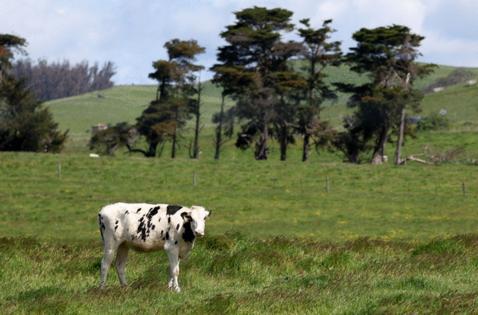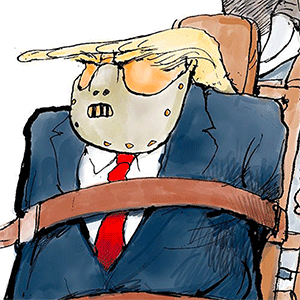Lisa Jarvis: Bird flu is about to crash flu season. It could get ugly
Published in Op Eds
It’s been nearly eight months since avian flu was first detected in U.S. dairy herds, and cases in both cows and humans continue to pile up.
That slow burn of infections through our nation’s livestock, a new vessel for the virus, has never been good for public health. It creates more chances for the H5N1 virus to change in ways that put humans at risk. But the ongoing spread among dairy cattle — and to a limited number of farm workers — gets more anxiety-inducing as we head into the winter flu season.
The will from public health agencies to slow the virus has clearly been outmatched by its stubborn persistence to circulate. Of the 505 confirmed infected herds since the start of the outbreak, 201 were detected in the last month — nearly all of them in California, where H5N1 is tearing its way through dairy farms.
“Even though we had seven months to investigate how this virus is spreading in dairy cows, we haven’t really been able to stem that spread — and California is just the most recent example of that,” says Andrew Pekosz, professor of molecular microbiology and immunology at Johns Hopkins Bloomberg School of Public Health. “And every cow farm it infects, that’s one more batch of humans who work on that farm at risk of infection.”
So far, 46 people have tested positive for H5N1 in the U.S. in 2024, but the lack of widespread testing among farm workers has made many infectious disease experts worried the actual number of cases could be much higher. That’s because most people have experienced relatively mild symptoms, like pink eye, that could easily be confused with allergies or a cold. Coupled with the reality that many farm workers are far less likely to seek care — they often lack insurance or sick leave, and might be hesitant because of their immigration status — you have a recipe for unnoticed infections.
And, indeed, a recent study from the Centers for Disease Control and Prevention found cases are going undetected. Researchers collected blood samples from 115 farm workers at dairies in Michigan and Colorado with confirmed H5N1 outbreaks to look for evidence of a past infection. Eight people (or 7%), all of whom had either milked cows or cleaned the milking parlor, had antibodies against the virus.
On some level, the finding should come as no surprise. Studies of earlier H5N1 outbreaks outside the U.S. found similar rates of asymptomatic or undetected infections. Meanwhile, testing among farm workers was practically nonexistent in the early part of the outbreak.
Still, this evidence of missed cases is surfacing as the U.S. heads into a risky time for avian flu to be spreading. Although seasonal flu activity is currently low, it’ll eventually pick up. That creates a potential new avenue for the viral genome to change: reassortment, a process in which theH5N1 virus could swap genetic bits with the seasonal flu virus to create something more dangerous. “Where this gets really scary is the possibility of reassortment,” says Angela Rasmussen, a virologist with the Vaccine and Infectious Disease Organization at the University of Saskatchewan.
Here’s how it works: After a virus infects us, it hijacks our cellular machinery to churn out lots of copies of itself. For an influenza virus, that involves making eight separate segments of RNA, which are stitched together into its complete genome. If someone is infected with both H5N1 and seasonal flu, some of those segments could get stitched into the wrong genome. The fear is that one of those genomic shuffles could empower the virus to more easily infect humans or make them sicker. (By the way, scientists also worry about this type of reassortment happening in pigs, which have receptors on their cells that are similar to both birds and humans — that’s why everyone was freaking out last month over the first H5N1 infection in swine.)
“It’s very concerning that you have a population that has less access to healthcare, perhaps is being discouraged from getting tested for any kind of influenza at all, going into a flu season where we know they’re vulnerable to getting infected,” Rasmussen says. “That creates a much higher risk for a reassortment.”
How can we avoid that? Reining in the spread in cows is the most obvious solution, though one that seems out of reach given the ongoing lack of will to take more stringent measures to protect herds and workers. We should worry, too, that the incoming Trump administration and its promised shake up of the CDC and other health agencies could hamper ongoing efforts to contain the virus.
The study on previous infections did prompt the CDC to do something it should have done months ago: Recommend that any farm worker exposed to a sick animal be tested for influenza A. The agency also said workers with a high-risk exposure to an infected cow should be offered the antiviral Tamiflu, even if they don’t have symptoms.
One very easy way to lower the chances of a genetic shuffling would be for everyone, but especially farm workers, to get vaccinated against seasonal flu. The CDC has provided thousands of free flu shots to states that have reported infected herds and has partnered with an organization doing education and vaccine clinics in various parts of the country.
The rest of us should get our flu vaccines, too. It reduces your risk of seasonal flu, of course (a worthy goal!). But two separate cases of individuals hospitalized with H5N1 with no known connection to livestock or infected birds are a reminder that there is a ton of avian flu still circulating in wildlife — and humans can be infected by touching or eating an infected animal. Those cases are rare, but they happen.
So far we have been lucky that the virus circulating in cows has yet to adapt to become something scarier. But luck is no substitute for a rational public health plan, and we should be taking every step possible to minimize our risks.
____
This column does not necessarily reflect the opinion of the editorial board or Bloomberg LP and its owners.
Lisa Jarvis is a Bloomberg Opinion columnist covering biotech, health care and the pharmaceutical industry. Previously, she was executive editor of Chemical & Engineering News.
©2024 Bloomberg L.P. Visit bloomberg.com/opinion. Distributed by Tribune Content Agency, LLC.




























































Comments